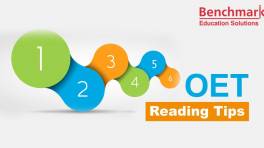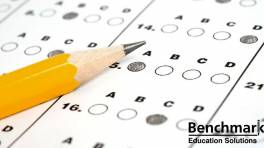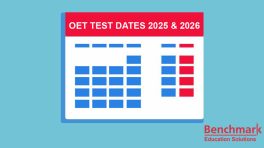Understanding how the OET Reading sub-test works


The OET Reading sub-test consists of Parts A, B and C and you may need to utilize different reading skills for each part. It is good to have a general understanding of what is tested in each part of the Reading sub-test so that you will sit for the test better prepared.
Part A is also known as the expeditious reading task, which means that you are expected to read quickly. It consists of 4 short texts. Generally, you will be tested on how fast you can read and pick up crucial information. You will have 15 minutes to answer the 20 questions so you are not expected to read in-depth. Read the questions first and then skim and scan the four texts quickly for the answers, especially for the matching questions (questions 1-7). For the other two question types (sentence completion and short answer), you need to write your answers by lifting words or phrases from the texts. This means you must use exactly the same form of the word or short phrase as given in the four texts. Make sure you spell the words correctly.
Part B and Part C are also known as the careful reading tasks. Part B tests your ability to read for gist as well as identify details. Each of the six questions in Part B has its own short text. This means that each text will only have one question. The texts in Part B may be short extracts taken from policy documents, healthcare guidelines, manuals, email messages or memos. As long as you read carefully and understand the details of what is written in the texts, you should be able to complete Part B well.
Part C, however, is a bit more challenging because it assesses your ability to understand opinions and attitudes. Some of these opinions may be explicitly stated (such as, ‘Brown disagrees’), or they may be implied (such as, ‘It is a noble prospect’). You will need to identify relationships between various ideas and even differentiate between the opinions of various sources or people mentioned in the text. You need to understand lexical references and complex phrases. For instance, in the earlier example, a simple two-word sentence can be, ‘Brown disagrees’. In order for you to find out what Brown’s opinion is, you will need to read earlier sections to discover what he disagrees with. You will obviously need to slow down your reading pace in order to gain a deeper understanding of the text because you are no longer speed reading (as you did in Part A) or just reading texts at the surface level (as you did in Part B).
Overall, each part of the OET Reading sub-test poses different challenges. If you sit for the test well prepared, you should be able to get the score that you want. Reading practice is important. If you need Reading practice materials, you can click this link for some extra help.












